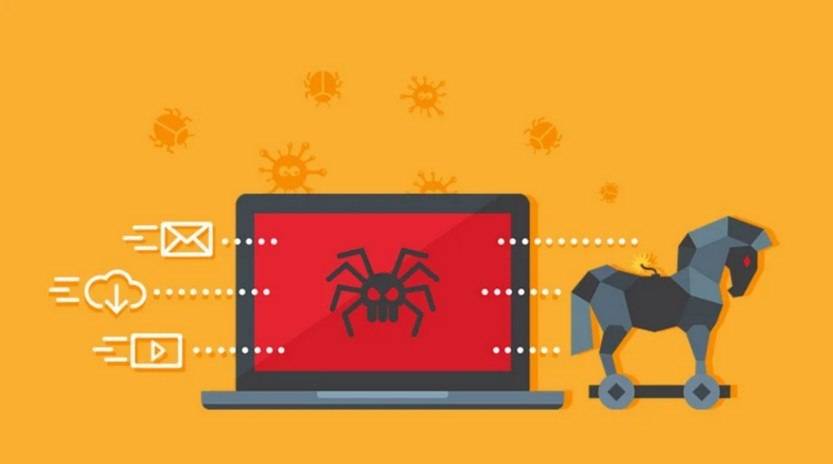Scammers are constantly finding new ways to deceive unsuspecting individuals and steal their personal information or money. One prevalent method is through phishing scams, where scammers impersonate legitimate organizations to trick people into revealing sensitive information. One such scam that has been on the rise is the “Your Tax Refund Is Ready” HMRC phishing scam email.

What is the ‘Your Tax Refund Is Ready’ HMRC Phishing Scam Email?
The “Your Tax Refund Is Ready” HMRC phishing scam email is an attempt by cybercriminals to trick individuals into believing that they are eligible for a tax refund from HM Revenue and Customs (HMRC), the tax authority in the United Kingdom. The email typically contains official-looking HMRC logos and branding, making it appear legitimate at first glance.
The scammers use various tactics to make the email seem convincing. They often include a sense of urgency, stating that the recipient must act quickly to claim their refund. The email may also mention a specific amount of money that the recipient is supposedly entitled to, further enticing them to click on the provided link.
How Does the Scam Work?
Once a recipient falls for the scam and clicks on the link provided in the email, they are directed to a fake website that closely resembles the official HMRC website. This website is designed to trick users into entering their personal and financial information, such as their full name, address, date of birth, bank account details, and even their National Insurance number.
Once the scammers have obtained this sensitive information, they can use it for various malicious purposes. They may sell the information on the dark web, use it to commit identity theft, or even directly access the victim’s bank account to steal their money.
What to Do If You Have Fallen Victim?
If you have fallen victim to the “Your Tax Refund Is Ready” HMRC phishing scam email, it is crucial to take immediate action to minimize the potential damage:
- Do not panic: It is natural to feel alarmed, but staying calm will help you think clearly and take the necessary steps to protect yourself.
- Disconnect from the internet: If you suspect that you have provided your personal information on a fake website, disconnect from the internet to prevent further unauthorized access.
- Scan your device for malware: Use a reliable antivirus or anti-malware software like Malwarebytes Free to scan your device for any malicious software that may have been installed.
- Change your passwords: Immediately change the passwords for all your online accounts, especially those related to your finances.
- Contact your bank and credit card companies: Inform them about the situation and ask for their guidance on securing your accounts and monitoring any suspicious activities.
- Report the scam: Report the phishing email to HMRC by forwarding it to phishing@hmrc.gov.uk. You can also report the incident to your local law enforcement agency.
Technical Details of the Scam
The “Your Tax Refund Is Ready” HMRC phishing scam email often uses advanced techniques to appear legitimate and bypass spam filters. Here are some technical details of the scam:
- Email spoofing: The scammers manipulate the email headers to make it appear as if the email is coming from a legitimate HMRC email address.
- Domain spoofing: The scammers create fake websites with URLs that closely resemble the official HMRC website, fooling users into thinking they are on a legitimate platform.
- Social engineering: The scammers use psychological manipulation to exploit human emotions and trick individuals into taking actions they wouldn’t normally do.
- Malware distribution: Clicking on the link in the email may lead to the download and installation of malware on the victim’s device, allowing the scammers to gain further access and control.
Statistics on Phishing Scams
Phishing scams, including the “Your Tax Refund Is Ready” HMRC phishing scam email, continue to be a significant threat. Here are some statistics that highlight the scale of the problem:
- In 2020, the Anti-Phishing Working Group (APWG) reported a total of 241,324 unique phishing attacks worldwide.
- According to the FBI’s Internet Crime Complaint Center (IC3), phishing scams resulted in over $54 million in losses in 2020 in the United States alone.
- A study by Verizon found that 22% of data breaches in 2020 involved phishing attacks.
- According to the UK’s National Cyber Security Centre (NCSC), HMRC was the most impersonated brand in phishing scams in 2020.
Summary
The “Your Tax Refund Is Ready” HMRC phishing scam email is a deceptive tactic used by cybercriminals to trick individuals into revealing their personal and financial information. It is essential to be vigilant and cautious when receiving such emails, especially those claiming to be from official organizations like HMRC.
If you have fallen victim to this scam, take immediate action by disconnecting from the internet, scanning your device for malware, changing your passwords, and contacting your bank. Reporting the incident to HMRC and local law enforcement is also crucial in helping combat these scams.
Remember, staying informed and adopting best practices for online security can go a long way in protecting yourself from phishing scams and other cyber threats.










